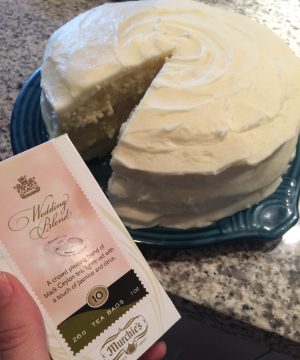Recent Posts
Categories
- Behind the Scenes (14)
- Gifting (18)
- Murchie's at Home (44)
- Recipes (74)
- Tasting Lab (14)
- Tea Stories (17)
Tag Cloud
- ice cream
- festive
- Harry and Meghan
- Spring
- lemon tea
- smokey
- latte
- picnic
- Wellness
- cold buster
- travel mug
- Peach Passion
- juice tea
- Antique
- tea cocktail
- diy latte
- Turmeric
- green-black blends
- Horchata
- white tea
- Rosé
- hot brew and chill
- hibiscus
- chai
- afternoon tea
- matcha
- cocktail
- beans
- cold brew coffee
- campfire
- canada 150
- iced coffee
- father's day
- Christmas
- Family
- Gift Ideas
- Morning Tea
- diy chai
- tea latte
- chai loose tea
- blue jasmine tea
- fruit tea
- chai tea
- Turmeric Latte
- Hibiscus Tango
- chai tea bags
- spiced tea
- tea
- hot brew
- iced tea
- sangria
- earl grey
- apple
- Easter
- Golden Milk
- canada day
- Mothers Day
- Breakfast Tea
- chamomile
- Oolong
- coffee
- tea recipe
- cozy
- pancakes
- cozy tea
- Ceylon
- holiday
- sencha
- canadian breakfast
- Turmeric Elixir
- gifts
- cold brewing
- recipe
- hibiscus tea
- hot chocolate
- pumpkin spice
- Valentine's Day
- cold steeping
- Family Day
- royals
- Brunch
- Tea Eggs
- royal tea
- camping
- cold brew
Making Harry and Meghan's Wedding Cake at Home with Murchie's
Layla Osberg - May 15, 2018
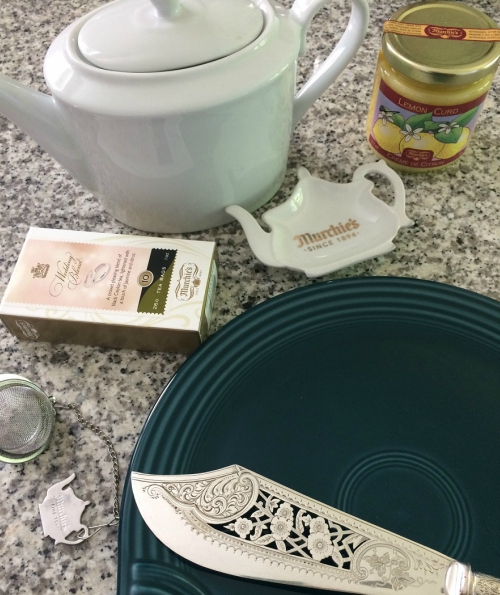 In less than one week, our favourite royal couple, Prince Harry and Meghan Markle, will be married - we're all so thrilled to watch the royal wedding on television! We would like to acknowledge the happy occasion by baking our own version of their Elderflower Lemon wedding cake using Murchie's Lemon Curd .
In less than one week, our favourite royal couple, Prince Harry and Meghan Markle, will be married - we're all so thrilled to watch the royal wedding on television! We would like to acknowledge the happy occasion by baking our own version of their Elderflower Lemon wedding cake using Murchie's Lemon Curd .
After all, the best memories are often those spent with family and close friends in the kitchen.
Last weekend a trusted Aunt was called upon to help in the kitchen and the kettle was promptly turned on. We brewed a pot of Wedding Blend and got down to business. The plan was to bake two cakes, one for family and one for Murchie's staff. Our inspiration was a recipe found online for Prince Harry and Meghan Markle's wedding cake - the very one that they commissioned from a small East London Bakery called Violet Cakes. This is definitely a celebration cake with layers of lemon curd and cream, elderflower-steeped sponge and clouds of buttercream. It was a lovely afternoon spent in the kitchen with my Aunt - and the time we saved using Murchie's Lemon Curd was pretty great too!
Enjoy these photos and we hope you try it yourself!
Here is the recipe and how we made the cake: 16 servings If you abstain from alcohol or don't want to buy the St-Germain called for here, you can leave it out or use more of the elderflower cordial in its place.
FOR THE CAKE:
- Fresh flowers (for decorating)
- 8 tablespoons (1 stick) unsalted butter, at room temperature, plus more for the pans
- 1 cup granulated sugar
- 1 tablespoon finely grated lemon zest (from 1 lemon; reserve the juice for the frosting)
- 3 large eggs, at room temperature
- 1 teaspoon vanilla extract
- 1/2 teaspoon salt
- 2 cups flour
- 2 teaspoons baking powder
- 1 teaspoon St-Germain or other elderflower liqueur (optional)
- 2/3 cup whole milk
- 1/2 cup elderflower cordial, plus more as needed
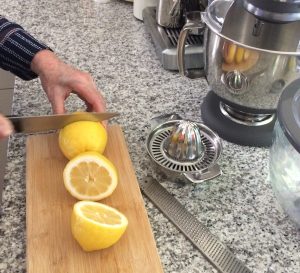
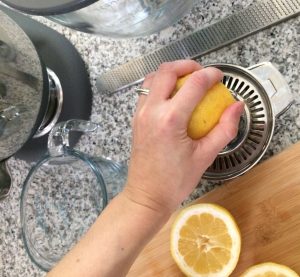
Tip: Squeeze lemon first, then grate.
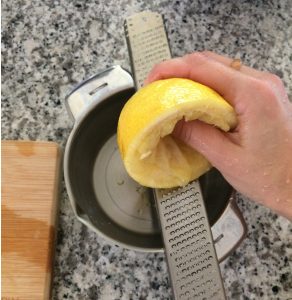
FOR THE FILLING:
- 1 cup chilled heavy whipping cream
- 1/2 cup Murchie's Lemon Curd at room temperature
FOR THE FROSTING:
- 14 tablespoons (1 3/4 sticks) unsalted butter, at room temperature
- 4 to 5 cups confectioners' sugar, or more as needed
- 7 tablespoons whole milk
- 1/2 teaspoon finely grated lemon zest and 2 tablespoons juice (from 1 lemon)
- 1 tablespoon St-Germain or other elderflower liqueur (optional)
FOR ASSEMBLY:
For the cake:
Preheat the oven to 300 F.
Butter or grease three 8-inch cake pans and line the bottoms with parchment paper rounds.
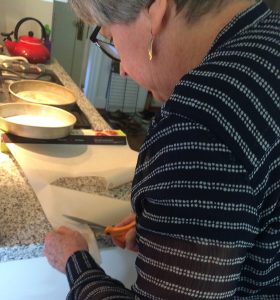
Tip: Use bottom of the pan to trace the pan and then cut.
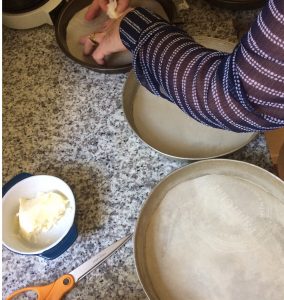
Tip: Put a dab of butter under the parchment to stop it from shifting around.
Place the granulated sugar in the bowl of a stand mixer or handheld electric mixer. Use your clean fingers to rub the lemon zest into the sugar until the sugar is aromatic and moist.
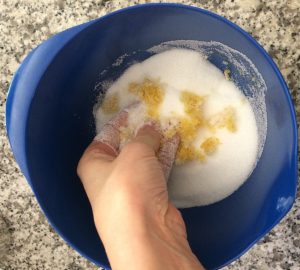
Tip: Using your fingers releases more of the oils from the lemon rind.
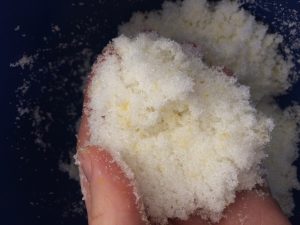
Add the butter; beat on medium-high speed for about 3 minutes, or until the mixture is fluffy and light. Meanwhile, lightly whisk together the eggs, vanilla extract and salt in a liquid measuring cup. Reduce the mixer speed to low; gradually add to the butter-sugar mixture until fully incorporated. Stop to scrape down the bowl.
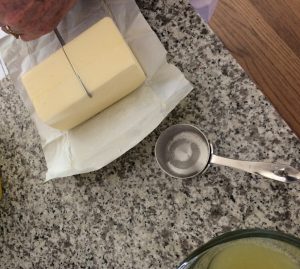
Tip: Using your fingers releases more of the oils from the lemon rind.
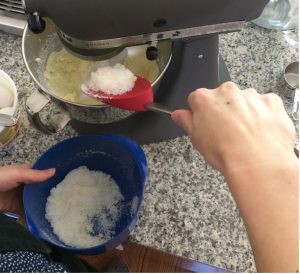
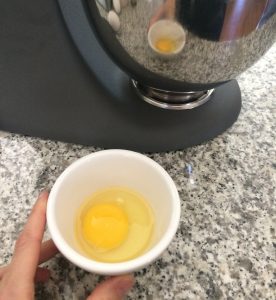
Tip: crack the egg into a dish and not directly into the mixer to avoid shells in the mixture.
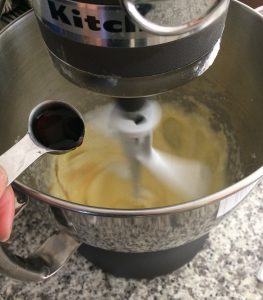
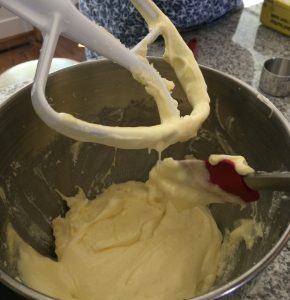
Whisk together the flour and baking powder in a separate bowl, then add half of it to the butter mixture.
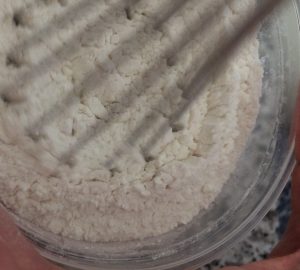
Tip: Blend flour, salt and baking powder separately.
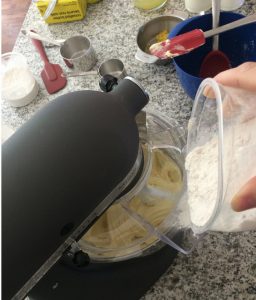
Beat on low speed until just combined, then add the milk and the elderflower liqueur, if using. Beat on low speed, until well incorporated.
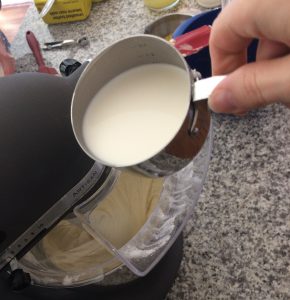
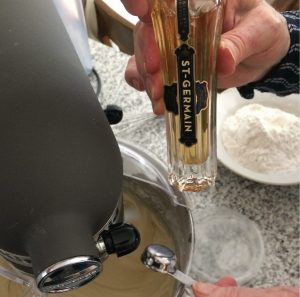
Add the remaining flour; beat on low speed until no trace of dry flour remains. Divide equally among the cake pans and smooth the tops with an offset or flexible spatula.
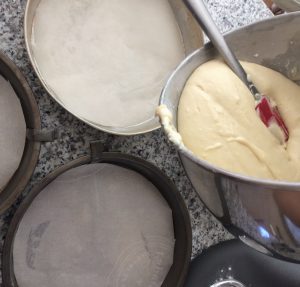
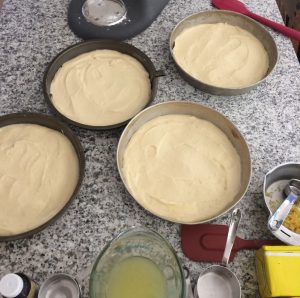
Bake (middle rack) for 15 to 20 minutes, until the top of each cake layer springs back to the touch.
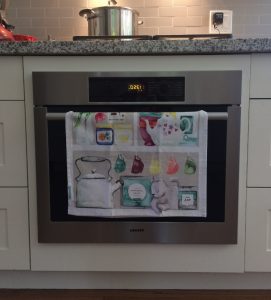
Into the oven the cake pans go!
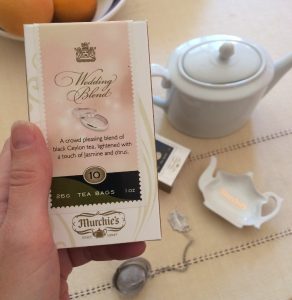
A few sips of tea while we wait for the cake to bake!
Wedding Blend Available in loose tea or tea bags.
The edges will be very lightly browned and starting to pull away from the sides of the pans. Cool in the pans for 15 minutes, then run a round-edged knife or offset spatula around the inside of the pans to release the layers. Invert onto a wire rack and peel off the parchment paper. Use a pastry brush or silicone brush to apply the elderflower cordial a total of four times, allowing a few minutes in between so the liquid is absorbed.
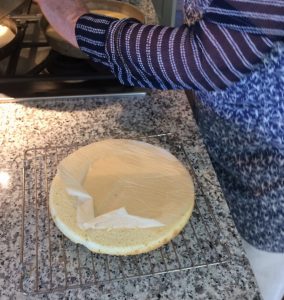
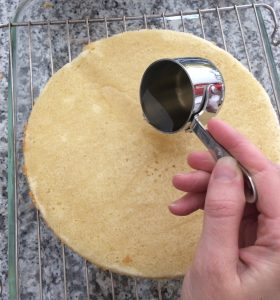
For the filling: Pour the heavy whipping cream into the bowl of a stand mixer fitted with balloon-whisk attachment or use a handheld electric mixer. Beat on high speed until it can hold a firm peak.
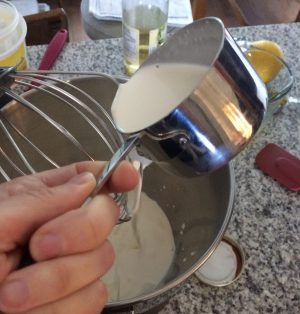
Use a flexible spatula to gently fold in half of the lemon curd, lifting cream from the bottom of the bowl over the top of the cream, rotating the bowl as you work. Be careful not to deflate the cream too much. Fold in the remaining lemon curd. Cover the bowl with plastic wrap and place in the refrigerator until you're ready to fill the cake.
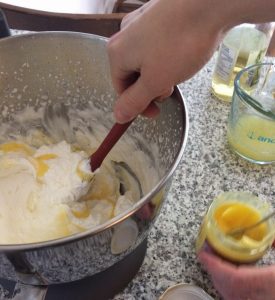
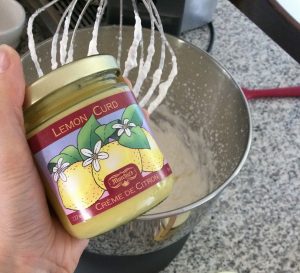
For the frosting: Combine the butter and 2 cups of the confectioners' sugar in the bowl of a stand mixer or handheld electric mixer. Beat on low speed and then increase to medium-high. Stop to scrape down the sides of the bowl. On medium-low speed, gradually add the milk, beating until combined.
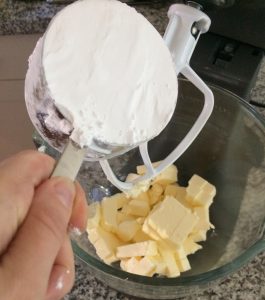
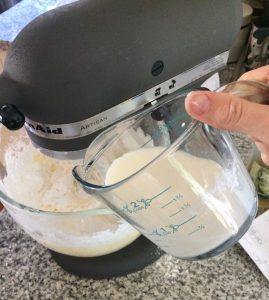
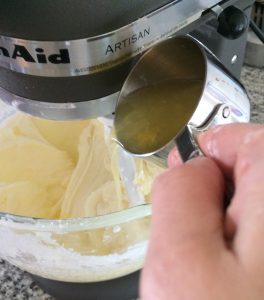
Add 2 more cups of confectioners' sugar and beat on low speed for at least 3 minutes. The mixture should be smooth. Add the lemon zest and juice and the St-Germain, if using; beat on low speed until incorporated. Continue adding more confectioners' sugar until you get the right consistency; the frosting needs to be thin enough to spread but thick enough to not run off the cake.
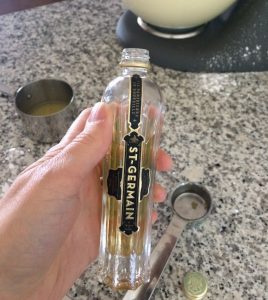
It's worth the effort to find this liquer! Tip: Get a larger bottle, it's delicious!
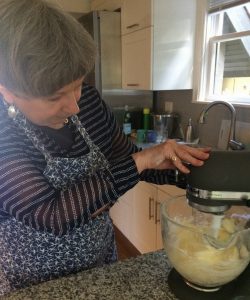
To assemble the cake, place a dab of frosting in the middle of a 9- or 10-inch cardboard cake round. Place one cake layer in the center, with the cordial-soaked side facing up.
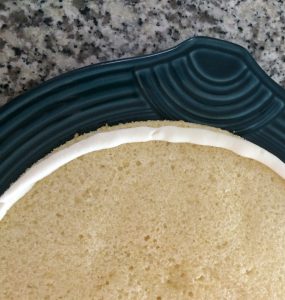
Tip: Pipe icing around the edges to prevent the lemon curd whipped cream mixture from squishing out the sides.

Use a pastry bag fitted with a large round tip or zip-top bag with one corner cut off to squeeze a border of frosting around the top of the cake, just inside the edge.
Use an offset spatula or spoon to spread half the filling inside the ring of frosting. Place the next cake layer on top, also cordial-brushed side up. Repeat with another ring of frosting and the rest of the filling.
Lay the final cake layer on top. Place a small amount of frosting in a separate bowl for the crumb coat. Use an offset spatula or table knife to apply the thin crumb coat all over the top and sides of the cake. Transfer the cake to the refrigerator for 20 to 30 minutes, to let the crumb coat set.
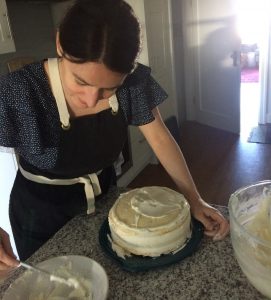
Apply the remaining frosting to the cake, and decorate the top with crystallized and/or fresh flowers, if using. Return the cake to the refrigerator to the let the frosting firm back up, another 20 or 30 minutes. Because of the soft filling and frosting, the cake is easier to cut when it's still cool — just out of the refrigerator. Let the cake sit at room temperature for just a few minutes before cutting into slices and serving. (This recipe is based on a recipe found online from The Violet Bakery Cookbook)
It turned out!
